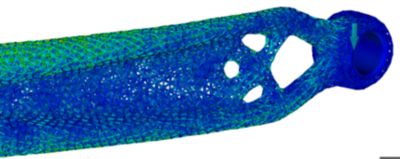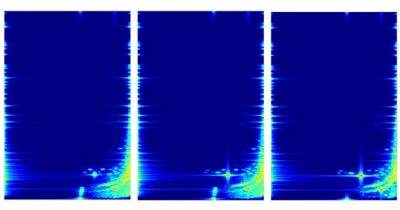“The combination of our partnership with Ansys solves problems for our customers neither one of us could do alone, bringing solutions that would have been impossible otherwise. We're at a point now where we're about to simulate environments at a million times higher performance than something we were able to do 10 years ago. A million times. Cars haven't improved by a million times. Nothing's improved by a million times. By partnering with Ansys, we can solve problems a million times better, and that is completely transformative for our customers.”
-
-
Kostenlose Software für Studierende
Ansys unterstützt die nächste Generation von Ingenieur*innen
Studenten erhalten kostenlosen Zugang zu erstklassiger Simulationssoftware.
-
Verbinden Sie sich jetzt mit Ansys!
Gestalten Sie Ihre Zukunft
Stellen Sie eine Verbindung mit Ansys her, um zu erfahren, wie Simulation Ihren nächsten Durchbruch vorantreiben kann.
Länder und Regionen
Kostenlose Demoversionen
Produkte & Dienstleistungen
Lernportal
Über das Unternehmen
Back
Produkte & Dienstleistungen
Back
Lernportal
Ansys unterstützt die nächste Generation von Ingenieur*innen
Studenten erhalten kostenlosen Zugang zu erstklassiger Simulationssoftware.
Back
Über das Unternehmen
Gestalten Sie Ihre Zukunft
Stellen Sie eine Verbindung mit Ansys her, um zu erfahren, wie Simulation Ihren nächsten Durchbruch vorantreiben kann.
Kostenlose Demoversionen
Ansys + NVIDIA
Enabling a New Frontier
Simulate a Million Times Higher Performance
As a technology leader in high-performance computing (HPC), Ansys works closely with NVIDIA to develop GPU-accelerated solvers and algorithms. Ansys and NVIDIA collaborate on professional graphics solutions to ensure that the Ansys workflow of model building, post-processing, and visualization tasks perform at their optimal levels of performance and quality.
See how NVIDIA and Ansys are working to advance the next wave of artificial intelligence (AI).
Simulate a Million Times Higher Performance
As a technology leader in high-performance computing (HPC), Ansys works closely with NVIDIA to develop GPU-accelerated solvers and algorithms. Ansys and NVIDIA collaborate on professional graphics solutions to ensure that the Ansys workflow of model building, post-processing, and visualization tasks perform at their optimal levels of performance and quality.
Learn More
Los geht's
Wenn Sie mit technischen Herausforderungen konfrontiert sind, ist unser Team für Sie da. Mit unserer langjährigen Erfahrung und unserem Engagement für Innovation laden wir Sie ein, sich an uns zu wenden. Lassen Sie uns zusammenarbeiten, um Ihre technischen Hindernisse in Chancen für Wachstum und Erfolg zu verwandeln. Kontaktieren Sie uns noch heute, um das Gespräch zu beginnen.



